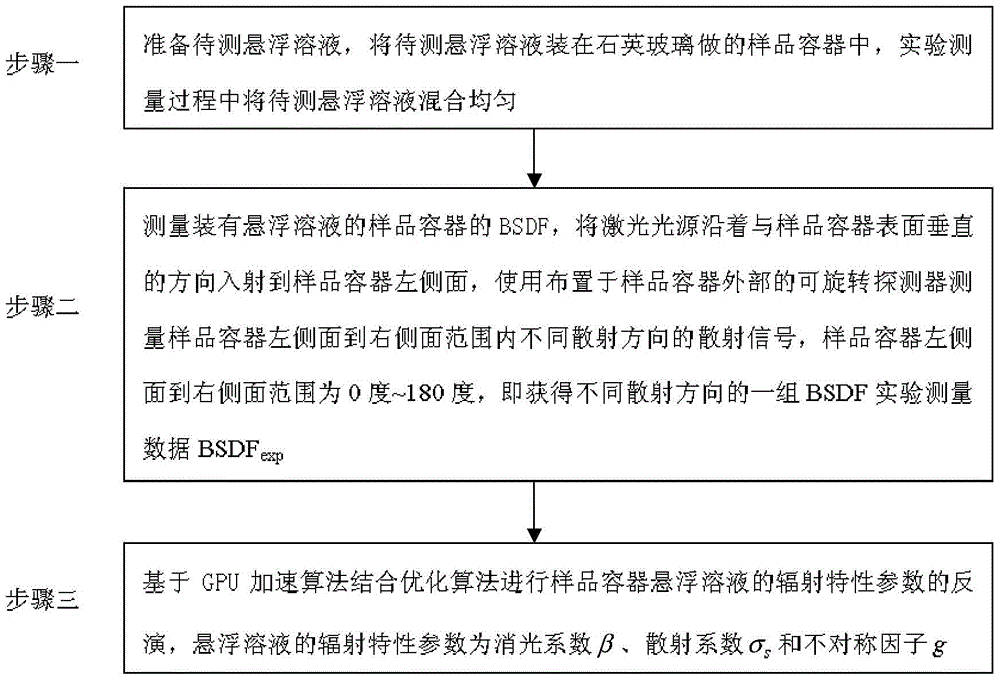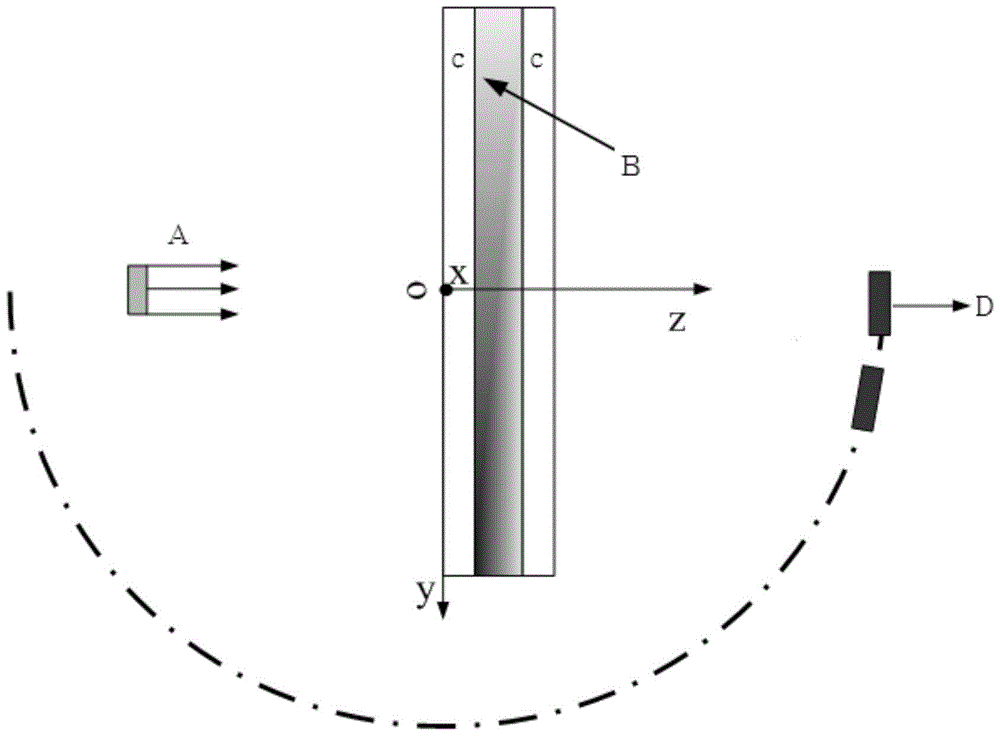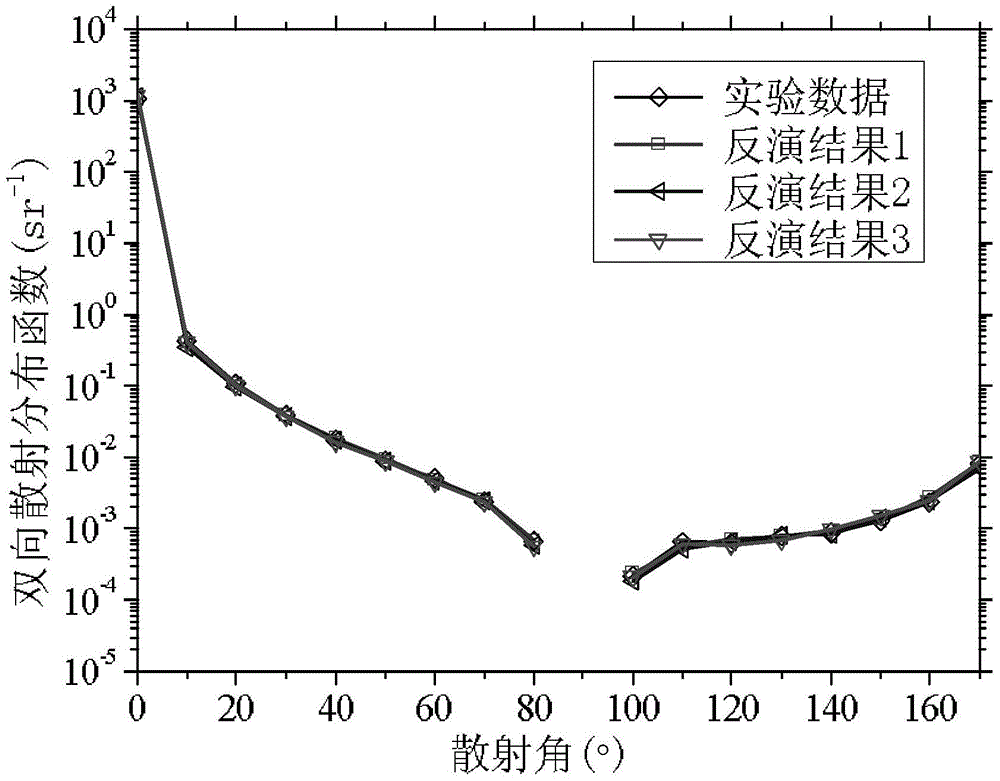Inversion Method of Radiation Characteristic Parameters of Suspension Solution Based on GPU Parallel Acceleration
A technology of suspended solution and radiation characteristics, applied in the measurement of scattering characteristics, etc., can solve the problems of large computer, cost, low accuracy, etc., and achieve the effect of small impact on initial value, high sensitivity, and improved accuracy
- Summary
- Abstract
- Description
- Claims
- Application Information
AI Technical Summary
Problems solved by technology
Method used
Image
Examples
specific Embodiment approach 1
[0035] Specific implementation mode 1: Combination figure 1 Explain that in this embodiment, the method for inverting the radiation characteristic parameters of the suspended solution based on GPU parallel acceleration is specifically performed according to the following steps:
[0036] Step 1. Prepare the suspension solution to be tested, put the suspension solution to be tested in a sample container made of quartz glass, and mix the suspension solution to be tested evenly during the experimental measurement;
[0037] Step 2. Measure the BSDF of the sample container containing the suspension solution to be tested. The laser light source is incident on the left side of the sample container along a direction perpendicular to the surface of the sample container, and the sample container is measured with a rotatable detector arranged outside the sample container The scattering signals of different scattering directions from the left side to the right side, and the range from the left ...
specific Embodiment approach 2
[0050] Embodiment 2: The difference between this embodiment and Embodiment 1 is that the initial values of the radiation characteristic parameters of the suspension solution are assumed in the third step, including the extinction coefficient β and the scattering coefficient σ. s And the initial value of the asymmetry factor g, and then use the GPU-based MC algorithm to solve the radiation transfer process in the sample container containing the suspension, and obtain a set of BSDF simulation data BSDF in different directions of the light scattering of the sample container sim ; The specific process is:
[0051] The radiation transfer process in the sample container is solved by the radiation transfer equation:
[0052]
[0053]
[0054] In the formula, I(r,s) is the radiation intensity, r is the position vector of the radiation field, s is the direction vector, β′ is the initial value of the extinction coefficient β, Φ(s′→s) is the scattering phase function, Ω′ is Solid angle, σ s...
specific Embodiment approach 3
[0056] Specific embodiment three: This embodiment is different from specific embodiment one or two in that the objective function F(x) in the step three is:
[0057] Combine the following formula:
[0058]
[0059]
[0060] In the formula, τ is the optical thickness, ω is the albedo, g is the asymmetry factor, and the value range of g is [-1,1], N d Is the number of scattering angles used.
[0061] Other steps and parameters are the same as those in the first or second embodiment.
[0062] The following examples are used to verify the beneficial effects of the present invention:
PUM
 Login to View More
Login to View More Abstract
Description
Claims
Application Information
 Login to View More
Login to View More - R&D
- Intellectual Property
- Life Sciences
- Materials
- Tech Scout
- Unparalleled Data Quality
- Higher Quality Content
- 60% Fewer Hallucinations
Browse by: Latest US Patents, China's latest patents, Technical Efficacy Thesaurus, Application Domain, Technology Topic, Popular Technical Reports.
© 2025 PatSnap. All rights reserved.Legal|Privacy policy|Modern Slavery Act Transparency Statement|Sitemap|About US| Contact US: help@patsnap.com



